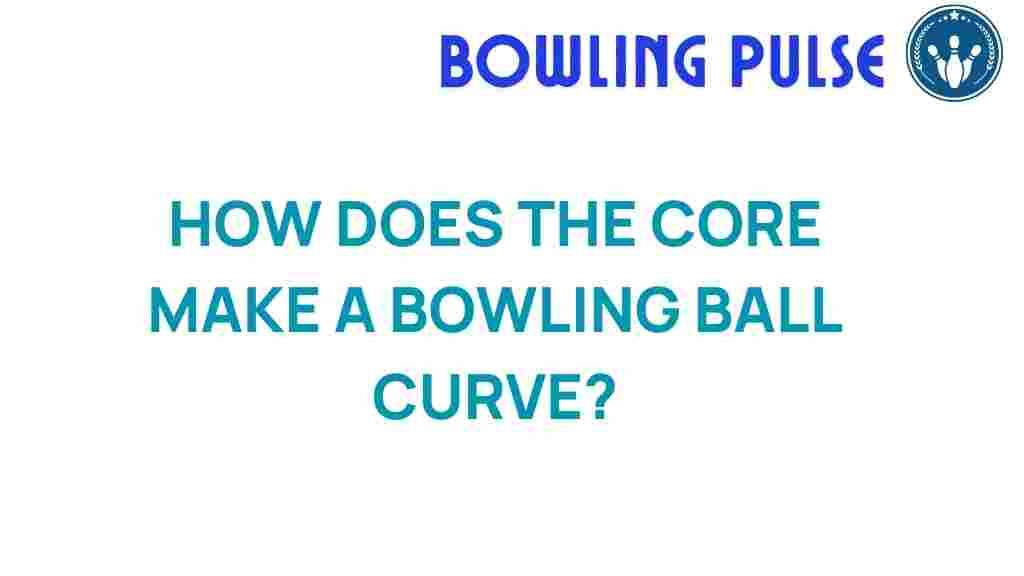Unlocking the Secrets: How Core Design Influences Bowling Ball Curves
Bowling is not just a game of luck; it’s a precise sport that combines skill, technique, and an understanding of equipment design. One of the most critical elements in bowling is the bowling ball core. The design and dynamics of the core significantly influence how the ball behaves on the lane, affecting its curves, hooks, and overall performance. In this article, we will explore the secrets of bowling ball core design, the mechanics of curves, and how you can enhance your performance through better understanding of equipment. Let’s dive into the fascinating world of ball dynamics and curve mechanics.
The Importance of Bowling Ball Core
The bowling ball core is the heart of the bowling ball. It is the internal structure that determines how the ball will behave when thrown. The core’s shape, density, and material all contribute to the ball’s overall dynamics. Here are some key aspects to consider:
- Shape: The shape of the core influences the ball’s rotation and stability. Common shapes include symmetrical and asymmetrical designs.
- Density: The density of the core materials affects the overall weight distribution and can enhance or reduce the ball’s momentum.
- Material: Different materials can alter the ball’s reaction to the lane surface, impacting how it curves and hooks.
Understanding these core characteristics can help bowlers select the right ball to match their playing style and the specific lane conditions they encounter.
Ball Dynamics: How Core Design Affects Performance
The ball dynamics of a bowling ball refer to how it behaves during its motion towards the pins. This includes factors such as speed, rotation, and angle of entry. Here’s how core design plays into these dynamics:
- Symmetrical Cores: These provide a predictable and stable motion. They are ideal for bowlers who prefer a straight throw with minimal hook.
- Asymmetrical Cores: These cores create a more aggressive hook and are suitable for advanced bowlers looking to achieve greater angles and higher revolutions.
- RG (Radius of Gyration): This measurement indicates how far the mass is distributed from the center of the ball. A lower RG provides quicker revs and a higher hook potential.
- Differential: This refers to the difference between the maximum and minimum RG values. A high differential results in a stronger hook.
Understanding these dynamics helps bowlers choose a ball that aligns with their desired technique and lane conditions.
Curve Mechanics: The Physics Behind the Hook
The curve mechanics of bowling balls are governed by physics. When a bowler releases the ball, several factors influence how it curves:
- Release Point: The angle at which the ball is released affects its initial trajectory and hook potential.
- Spin Rate: The amount of revolutions imparted on the ball during release determines how much it will hook.
- Lane Condition: The oil pattern on the lane can significantly alter how a ball reacts. Different balls respond uniquely to varying patterns.
To maximize your curve, focus on refining your release technique and understanding the lane’s condition.
Bowling Techniques for Precision
To master precision bowling, it’s essential to combine your knowledge of bowling techniques with the right equipment design. Here are some effective techniques to improve your game:
- Grip: Use a proper grip that allows for maximum control at the release point.
- Stance: Take a balanced stance that sets you up for a smooth approach.
- Approach: Maintain a consistent approach speed and rhythm.
- Release: Focus on a clean release, with your fingers behind the ball to generate spin.
- Aim: Use the arrows on the lane to align your shot accurately.
Practicing these techniques will lead to better consistency and performance on the lanes.
Step-by-Step Process to Choose the Right Bowling Ball
Choosing the right bowling ball can greatly enhance your performance. Follow this step-by-step process:
- Determine Your Skill Level: Assess whether you are a beginner, intermediate, or advanced bowler.
- Understand Lane Conditions: Identify the common oil patterns you encounter.
- Evaluate Your Throwing Style: Are you more of a straight thrower or do you prefer a hook?
- Test Different Cores: Try balls with symmetrical and asymmetrical cores to see which suits your style.
- Consider Weight and Fit: Make sure the ball fits comfortably in your hand and is the right weight for your strength.
By carefully evaluating these factors, you can select a bowling ball that will enhance your game significantly.
Troubleshooting Common Bowling Ball Issues
Even with the right combination of bowling techniques and equipment design, issues can arise. Here are some common problems and their solutions:
- Ball Not Hooking: Ensure your release has sufficient spin and check if the ball is suited for the lane conditions.
- Inconsistent Shots: Work on your approach and release technique; consider practicing with a coach.
- Ball Overreacting: This can happen with too aggressive a core; consider trying a ball with a more stable core design.
Identifying and addressing these issues can lead to significant improvements in your bowling performance.
Conclusion: The Path to Performance Enhancement
Understanding the intricacies of the bowling ball core, ball dynamics, and curve mechanics is crucial for any bowler looking to improve their game. By applying the right bowling techniques and selecting the appropriate equipment, you can unlock your potential and achieve greater precision on the lanes. Remember, bowling is a blend of art and science—mastering both will place you on the path to success.
For more tips and techniques, check out our bowling resources to help you refine your skills. Additionally, explore the latest innovations in bowling equipment design at Bowling Ball Technology.
This article is in the category Equipment and created by BowlingPulse Team
